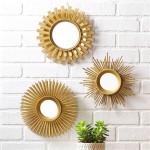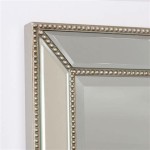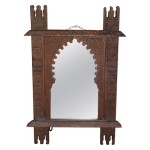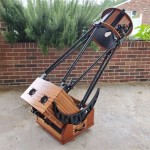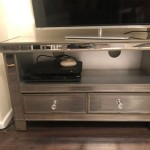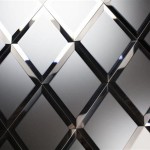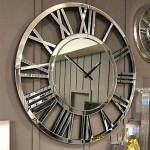How to Hang a Mirror on the Ceiling Without Studs
Hanging a mirror on the ceiling can dramatically alter a room's ambiance, creating the illusion of expanded space and enhanced brightness. This technique is particularly useful in smaller rooms or those with limited natural light. However, many ceilings lack readily accessible studs, presenting a challenge to securely mounting a mirror. This article explores various methods for hanging a mirror on a ceiling without relying on traditional stud support, focusing on the tools, techniques, and safety considerations involved.
Before initiating any ceiling project, assessing the ceiling's composition is crucial. Common ceiling materials include drywall, plaster, and suspended acoustic tiles. Drywall, a widely used material, is relatively lightweight but offers limited load-bearing capacity. Plaster, particularly older plaster ceilings, can be denser and more durable than drywall, but its age and condition can affect its ability to support weight. Suspended acoustic tile ceilings are designed for sound absorption and are not structurally robust enough to support the weight of a mirror without significant modification to the grid system.
The weight of the mirror is a primary factor influencing the choice of hanging hardware. Lightweight mirrors, typically those under 5 pounds, can be hung with less robust anchors than heavier mirrors. Mirrors exceeding this weight range often require specialized anchors designed to distribute the load across a wider surface area of the ceiling.
Selecting Appropriate Anchors
The selection of appropriate anchors is critical for a successful and safe mirror installation. Several types of anchors are designed for use in drywall and plaster ceilings, each with varying load-bearing capacities. Understanding the characteristics and limitations of these anchors is essential for choosing the right one for the specific mirror and ceiling type.
Toggle Bolts: Toggle bolts are a widely used option for hanging heavier objects from drywall or plaster ceilings. These anchors consist of a bolt and a wing-like toggle that expands behind the ceiling material, providing a secure hold. Installation involves drilling a hole large enough to accommodate the folded toggle, inserting the bolt with the toggle attached, and then tightening the bolt to expand the toggle against the back of the ceiling. Toggle bolts offer a high load-bearing capacity, making them suitable for heavier mirrors. However, the larger hole required for installation can be a drawback if the mirror needs to be repositioned.
Molly Bolts: Molly bolts, also known as expansion anchors, provide another option for hanging mirrors on ceilings without studs. These anchors consist of a screw and a metal sleeve that expands as the screw is tightened, gripping the back of the ceiling material. Molly bolts are typically easier to install than toggle bolts, requiring a smaller hole. However, their load-bearing capacity is generally lower than that of toggle bolts, making them more suitable for moderately weighted mirrors. When installing molly bolts, care must be taken to avoid over-tightening, which can damage the anchor or the ceiling material.
Snap Skru Anchors: Snap Skru anchors are self-drilling anchors designed for use in drywall. These anchors feature a sharp point that allows them to be screwed directly into the drywall without pre-drilling. The anchor's threads then grip the drywall as it is screwed in, providing a secure hold. Snap Skru anchors are relatively easy to install and offer a moderate load-bearing capacity. However, they are best suited for lighter mirrors and may not be adequate for heavier objects.
Ceiling Hooks with Spring Toggles: These are specifically designed for ceiling applications, often used for hanging plants or lightweight decorations. They feature a hook with a spring-loaded toggle that expands behind the ceiling. While convenient and easy to install, their load-bearing capacity is typically limited to a few pounds. Therefore, these hooks are only suitable for very lightweight mirrors.
When selecting anchors, it is vital to consider the manufacturer's stated weight capacity. Always choose an anchor with a weight rating that exceeds the mirror's weight to provide a safety margin. It is also advisable to consult with a professional if there is any uncertainty about the suitability of a particular anchor.
Preparing the Ceiling and Mirror
Prior to installation, the ceiling surface should be cleaned to remove any dust, dirt, or debris. This ensures proper adhesion of any adhesive components of the mounting system and prevents the anchor from loosening over time. Use a damp cloth to wipe the area where the anchor will be installed, and allow it to dry completely before proceeding.
The mirror itself should also be inspected for any damage or defects. Ensure that the back of the mirror is clean and free of any residue that could interfere with the adhesion of mounting hardware. If the mirror has a frame, check that the frame is securely attached to the mirror. Any loose framing should be repaired before hanging the mirror.
Accurate measurement is crucial for ensuring that the mirror is hung in the desired location and that the anchors are properly spaced. Use a level to mark the desired position of the mirror on the ceiling. Measure the distance between the mounting points on the back of the mirror and transfer these measurements to the ceiling, marking the locations where the anchors will be installed. Double-check these measurements to ensure accuracy before drilling any holes.
For mirrors without pre-installed mounting hardware, appropriate hardware should be attached to the back of the mirror. D-rings or wire can be used for hanging, depending on the mirror's weight and size. Ensure that the hardware is securely attached to the mirror using screws or adhesive, following the manufacturer's instructions.
Installation Procedures and Safety Considerations
The installation process will vary depending on the type of anchor being used. However, some general steps apply to most installations. Always wear safety glasses to protect the eyes from debris during drilling. Use a drill bit that is the correct size for the anchor being used, following the manufacturer's recommendations. If drilling into plaster, use a masonry drill bit to prevent chipping or cracking the plaster.
When drilling the pilot hole, hold the drill at a 90-degree angle to the ceiling to ensure a straight hole. Apply steady pressure to the drill, avoiding excessive force that could damage the ceiling material. Once the hole is drilled, insert the anchor according to the manufacturer's instructions. For toggle bolts or molly bolts, ensure that the toggle or sleeve is fully expanded behind the ceiling before tightening the bolt or screw.
After the anchors are installed, test their stability by gently pulling on them. If any anchor feels loose or unstable, remove it and reinstall it with a new anchor. Once all the anchors are securely in place, carefully lift the mirror and hang it on the anchors. Ensure that the mirror is securely seated on the anchors and that it is level.
Safety is paramount when hanging a mirror on the ceiling. Always use a sturdy ladder or scaffolding to reach the ceiling. Ensure that the ladder is placed on a level surface and that it is stable before climbing. If working alone, have someone spot you to ensure your safety. Avoid overreaching or leaning excessively while on the ladder.
When working with electrical wiring, turn off the power to the circuit before drilling any holes in the ceiling. Use a stud finder with electrical wiring detection or consult electrical plans to identify the location of any wiring in the ceiling. Avoid drilling into areas where wiring is present to prevent electrical shock.
Consider the impact of ceiling fans or other moving objects that might come into contact with the mirror. Ensure enough clearance exists to prevent accidental collisions. Furthermore, factor in potential vibrations transmitted through the ceiling, especially in older buildings or those near sources of heavy traffic. These vibrations could gradually loosen anchors over time.
Regularly inspect the mirror and the anchors for any signs of loosening or damage. If any problems are detected, take immediate action to correct them. This may involve tightening the anchors, replacing damaged hardware, or reinforcing the mounting system.

How To Hang A Heavy Mirror Or Picture Right The First Time

How To Hang Heavy Items Without A Stud

3 Simple Ways To Hang A Mirror On Wall Without Nails Wikihow

How To Hang A Heavy Mirror

How To Hang A Mirror Without Hooks On The Back

How To Install A Mirror Without Frame Merrypad

No Stud Drywall Picture Hangers Stas Hanging Systems

3 Simple Ways To Hang A Mirror On Wall Without Nails Wikihow

3 Simple Ways To Hang A Mirror On Wall Without Nails Wikihow

How To Hang A Heavy Mirror On Drywall Stas Picture Hanging Systems
